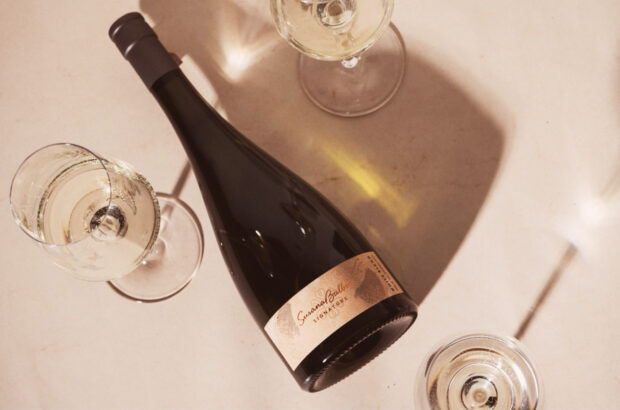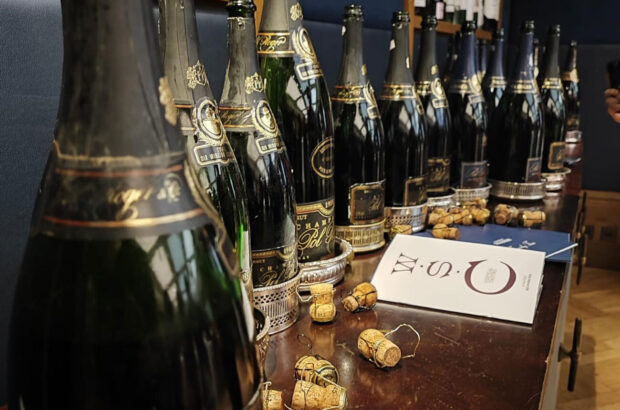I’m sitting in the heart of County Cork watching an American chef demonstrate Mexican cooking. Okay, okay. In case you think I’ve been drinking a bit too much of the black stuff, let me explain.
The chef is Rick Bayless of Frontera Grill in Chicago, by general agreement the most highly regarded exponent of Mexican cooking in the States. The course is being run by Darina Allen of the world famous Ballymaloe Cookery School – a big Bayless (and Mexico) fan. And me? Well I’m there because I got hooked on Bayless’s cooking in Chicago a year ago and couldn’t wait to learn how to do it myself at home.
Bayless is as unlike a celebrity chef as you can imagine. Slim, quietly spoken, boyish, he looks much younger than his 47 years – more like a singer/songwriter or maybe a West coast academic. What makes his food special is its authenticity, the fact that it is rooted in a culture for which he has a genuine passion. ‘In Mexico food is a very big part of family and community life. It’s not a restaurant culture,’ he explains. ‘You learn from family recipes, markets, cooks in the street.’
He and his wife and business partner Deann did just that. After presenting a TV series on Mexican food in the late 1970s, they spent four years travelling in Mexico talking to small producers and collecting recipes. It resulted in the scholarly Authentic Mexican which was published in 1987, the same year that the Bayless’s opened their seminal restaurant Frontera Grill. Two years later they opened a fine dining restaurant next door, Topolobampo, an unheard of approach to a cuisine that had always been associated with fast food.
The way the restaurants are run says a great deal about Bayless’s philosophy. At Frontera Grill in particular, prices are ridiculously modest which, combined with the fact that they take no bookings, means the restaurant is constantly heaving. Despite the fact that they manage to pack in three to four sittings on a Saturday night, the queues can stretch right round the block. ‘We’re iconoclasts,’ smiles Bayless. ‘We’re popular because we don’t try to be popular. Some people call us the yuppie soup kitchen.’
The menus at both restaurants are changed every month, the only permanent fixtures being the chocolate pecan pie at Frontera and the crepas con cajeta (buttered crêpes with goat milk caramel) at Topolobampo. If you fall for something like the tostaditas de ceviche (crisp little tortillas piled with lime-marinated marlin) or the camarones en mole verde (grilled prawns in green pumpkinseed mole), my favourites on my last visit, tough luck. Bayless wants you to try something else.
As part of his mission to get Mexican food taken seriously, these homely dishes are paired with serious wine. Bayless himself takes a keen interest in the subject. ‘In general I think Mexican food is more red wine food than white wine food. If I had to pick one wine I guess it would be one with youthful fruit, moderate concentration, low tannins and a fair amount of complexity. Syrah works well with chilli as do other wines from the Rhône; Tempranillo – particularly from Rioja – and of course Zinfandel.’
Although Bayless has a clear agenda he’s never preachy. ‘What I’m trying to do is to broaden people’s horizons as to what Mexican food is about. But I never take a defensive posture. Good food speaks for itself. It’s like good art. If you put it in front of people they will immediately want to find out more about it.’
He practices that philosophy himself, regularly taking members of his 85-strong staff to Mexico so they can see what the food is like for themselves. At least half of the staff are Mexican anyway. ‘A lot of restaurants have a glass ceiling above which you cannot go. We make it a strong point to have Mexicans working for us at every level. Our general manager is Mexican.’
He is an instinctive teacher and communicator. His new book for example, Mexico: One Plate at a Time (Scribner $35), which was tied in with a 26-part TV series, patiently takes the reader through 30 basic recipes, giving the traditional version, one with a modern twist then seeking, in a ‘questions and answers from our testing’ section, to answer any possible query the reader might have about them.
Simple solutions
On the Ballymaloe course, rather than attempting to dazzle us with his virtuosity, he seeks to open our eyes to the possibilities of Mexican cuisine. He introduced us to unfamiliar ingredients such as tomatillos and epazote (a pungently aniseedy herb that gives a distinctive character to soups and sauces), the techniques for handling a tortilla, the complexity of a mole and the range of Mexican desserts.
In particular he’s eager to spread the word about chillies. ‘Everywhere except for Mexico people think of chillies as being hot. In Mexico they’re considered much more like a vegetable. At least 100 kinds are used every day. Each has its own flavour and pungency. Dried chillies are generally roasted in a pan before being rehydrated which accentuates their sweetness and minimises any bitterness. It’s not an accent, it infuses the whole dish.’
It speaks volumes for Bayless that I leave the course stimulated but unsatisfied, longing to know more. He appears to share the same feeling. ‘We have 500 dishes on our menu but we still haven’t scratched the surface. I could spend the rest of my life in Mexico and I wouldn’t begin to unearth them all,’ he says modestly. But you can bet he’s going to try.
Frontera Grill and Topolobampo are at 445 North Clark Street, Chicago +44 1 312 661 0498. Mexican ingredients can be ordered in the UK from the Cool Chile Company (+44 870 9021145). You can buy fresh tomatillos from Peppers by Post in Dorset, UK (+44 1308 897892). Details of Ballymaloe’s cookery courses can be found here.












